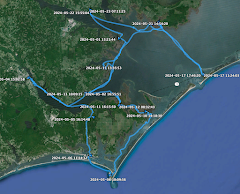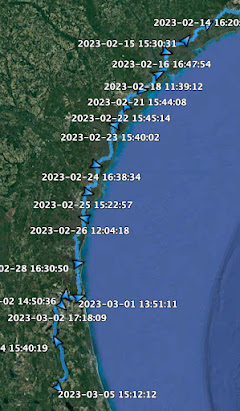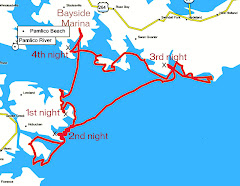Chesapeake Bay's iconic blue crab, Callinectes sapidus, is in trouble.
On this chilly winter day almost 70 million crabs of female crabs are burrowed in the mud in the lower Bay, waiting for spring and the spawning season. That may sound like a lot, but not when you consider that over 200 million females are needed to maintain a healthy population. The situation is described in a story in today's Washington Post.
H. L. Mencken referred to Chesapeake Bay as an immense protein factory, crabs being one of the main products. He went on to describe the crustacean as....
"prime hard crabs of the channel species, blue in color, at least eight inches in length along the shell, and with snow-white meat almost as firm as soap"
Steamed, fried, grilled or sautéed, there is not a bad way to serve crabs. I cannot image a spring without soft shells, a summer without crab cakes or a fall without spice-covered hard shells. An important part of the bay's ecology, they are an important part of the economy too, providing an income for watermen, boatbuilders, wholesalers, crabs pickers, grocers, restauranteurs and chefs.
Pollution and overfishing have done their damage. And nature has been rough too - sharp freezes that kill the crabs in the winter and a thriving red drum population feeds on juvenile crabs in the summer.
Sailing out on the bay, the waterman working on deadrises are a constant, hauling crab pots or working trot lines. With all that activity it is hard to imagine that the last time the crab population was this low the industry was declared a failure.
I don't know what the answer is, I don't think anyone does. Awareness is maybe a start.















































2 comments:
Glad my Dad isn't around to hear this...
It's sad. Kind of reminds me of skindiving in California and just picking the abalone off the rocks to take home and cook. Now the abalone are hard to find and the meat sells for anywhere from $40 to $100 a lb.
steve
Post a Comment